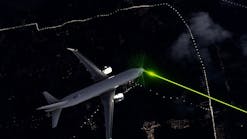The last time I flew into Moscow’s Sheremetyevo Airport was about 10 years ago and I must admit that the experience was underwhelming. Compared to award-winning world class airports like London’s Heathrow and Singapore’s Changi, it was clear that Sheremetyevo had a lot of catching up to do in preparation of the global influx of visitors for the 2014 Olympic Games in Sochi.
Sheremetyevo embarked on a large-scale reconstruction and modernization plan with the goal to become the best air hub in Europe in terms of passenger service quality by 2015; increase annual passenger traffic to 35 million; and build its share on non-aviation activities up to 60 percent of total revenues.
The master plan proposes to bring the airport’s handling capacity up to 64 million people, as well as increase the transit flow up to 25 percent by 2030 through this long term development strategy to create a “powerful economic driver, modern aerotropolis with a well-developed infrastructure and an attractive place of employment for thousands,” according to the news release on the airport’s website.
Major infrastructure improvements include:
- In 2007, a new international Terminal C with a four-level parking facility for 2,500 cars was opened. It is the world’s first air terminal complex constructed in as little as one year.
- In 2008, Aeroexpress was launched providing rail services between the capital and all of the major Moscow airports (Vnukovo, Domodedovo and Sheremetyevo), as well as the town of Lobnya. New intermodal transportation services were initiated between the central rail terminal of Sochi and Adler Airport.
- A business aviation hangar facility was built and is now capable of providing complete maintenance of business jets with its premium-class services.
- In 2009, large scale work on the technological modernization and optimization of internal space of Terminal F (formerly known as Sheremetyevo 2) was conducted. The introduction of new screening equipment can now handle as many as 300 passengers per hour.
- In 2009, Terminal D was commissioned with an annual capacity of 12 million passengers. The air terminal complex is designed to service the Aeroflot flights along with its Sky Team alliance partners.
- In spring 2010, a modern international Terminal E was opened at the airport with the capacity to handle more than 7 million passengers. The new terminal unified Terminals D, F and Aeroexpress railway station into an integrated South Terminal Complex.
- In 2012, Terminal A located in the northern part of Sheremetyevo Airport was completed and offers business aviation passenger service.
I was surprised to learn the scope of investment in Sheremetyevo infrastructure improvements. These initiatives will definitely contribute to propelling Moscow towards its goal of becoming a prospective international financial center.
In addition to the master plan redevelopment and construction, the airport has also made significant enhancements in an effort to improve its passenger experiences. Some noteworthy passenger improvements in just the past year include:
- Launch of an innovative service to protect air travelers’ personal belongings in cooperation with mySafety — one of the world’s leading companies in the field of protecting customers’ personal effects. It even includes blocking SIM cards for lost mobile phones and safety bracelets to find lost children!
- Introduction of a new online service for air passengers, making it possible to book hotel rooms anywhere in the world. The service is provided by Ostrovok.ru and makes it easy to select and book a room from among 130,000 hotels in 200 countries worldwide.
- Implementing an airport wide program that created a barrier-free environment for passengers with reduced mobility. The facilities include the Sirius Lounge, a one-of-a- kind facility specifically designed for passengers with reduced mobility and are especially important to the run-up to the Sochi 2014 Paralympic Games.
- Opened a modern capsule Air Express Hotel for transit air travelers. Located in Terminal E, South Terminal Complex, the hotel has 46 comfortable rooms which resemble the small cabins of a passenger cruise liner, and have all the amenities for a good rest.
- Established a Green Environmemt, with high tech ecological facilities for voluntary environmental protection. It includes the Energy-Saving Program; electric automobiles for ferrying passengers around the South Terminal Complex; packing press for on-line carton processing; and a Wastewater Treatment Plant.
- Initiated free “public telephones” for passengers and guests to be able to call to mobile and land-line numbers in any Russian region for no charge. This is especially welcome in anticipation of the Olympic and Paralympic games as it provides guests and participants the ability to communicate as they make their way to Sochi.
- For security in advance of the Olympics, Aeroflot created a unique canine service at Sheremetyevo Airport that received an award from the Sochi 2014 Organizing Committee - a system of preventive anti-terrorist protection of passengers, personnel, aircraft and facilities with the help of detection dogs. The project makes use of specially bred species (jackal-dog hybrid dubbed the Sulimov dog) that have improved sensitivity and selectivity. The service is designed to enhance the security of Aeroflot’s extensive route network.
Clearly, Russia has made a commitment to improve its airport infrastructure at an accelerated pace. I am pleasantly surprised at the expansion and construction that has been initiated and completed in the past decade. Sheremetyevo appears to be ready to welcome the influx of athletes and visitors from around the world.
But despite the airport’s apparent readiness as Russia’s major aviation gateway to the country, the biggest concern that remains in anticipation of the 2014 Winter Olympics in Sochi is the active threat of terrorism. Let’s hope that the extensive security measures put in place can and will keep the participating athletes and visitors safe during and after the games.
# # #
Agnes Huff, PhD, has more than 25 years of experience providing specialized strategic public relations and marketing, crisis management and business consulting to a diverse group of clients in the aviation industry. In 1995, she founded Agnes Huff Communications Group (AHCG) an integrated marketing and PR consulting firm headquartered in Los Angeles. Clients include national and international airports and airlines, government entities, travel and tourism organizations, and transportation companies, among other high-profile industry clients. She welcomes feedback and will respond to comments at [email protected]. More information is available at www.ahuffgroup.com.



